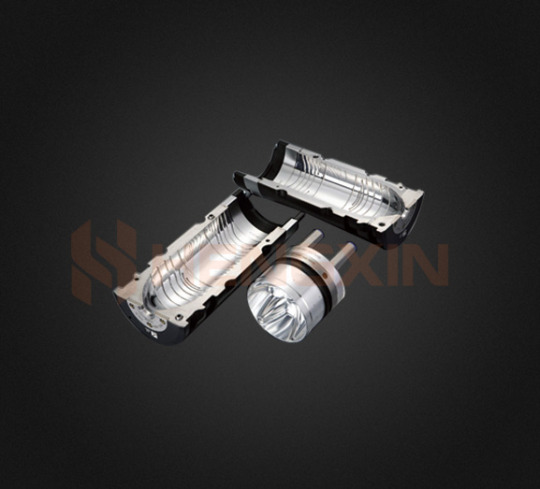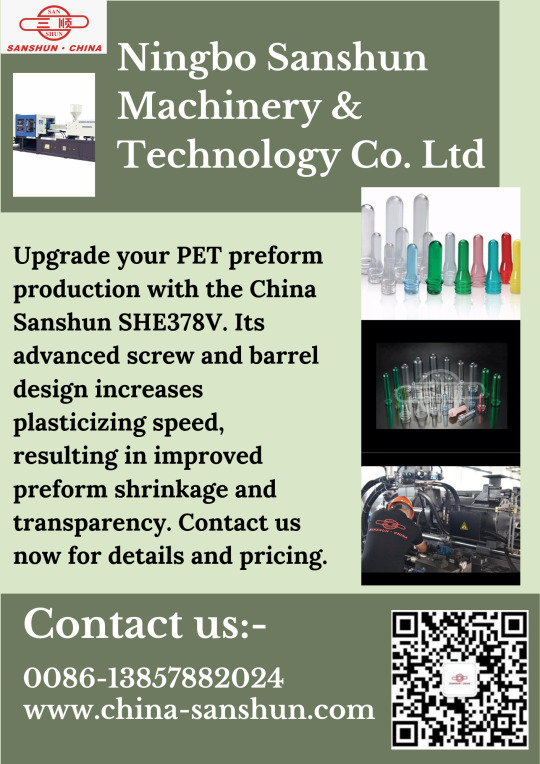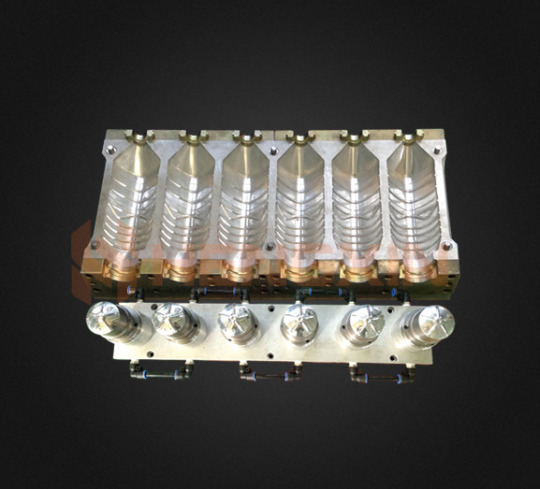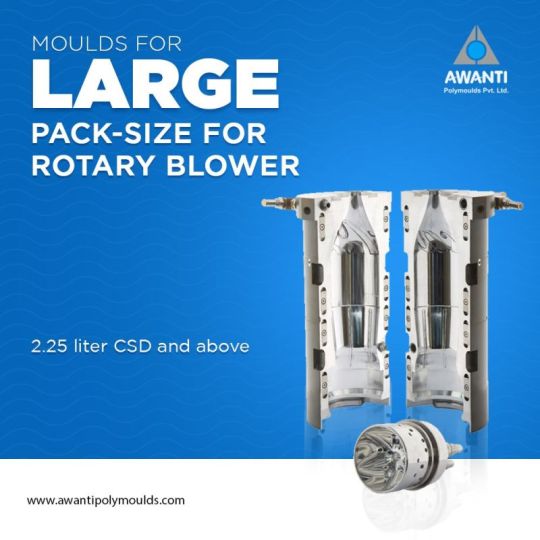#blow moulding
Photo

Quick-change moulds to produce PET bottles with filling temperature above 88 degrees
0 notes
Text
hate when being absurdly forgetful becomes a genuine day to day problem and isn't just a silly little loveable character trait
#adhd#hehe oops i forgot what i walked in this room for#but also#forgetting to turn off electronics#forgetting to blow out candles#forgetting what i am doing halfway through doing it even when it's important to not failing my classes#forgetting to go to sleep#forgetting to eat#forgetting to go to the bathroom#forgetting to get off the bus#forgetting to go to class when i am sat waiting to go to class#forgetting plans and planning multiple conflicting outings#forgetting to take dirty dishes out of my room and them growing mould#forgetting to do things i enjoy doing#forgetting to sit down despite my leg problems#forgetting my walking stick and being in immense pain#forgetting when crucial exams are#forgetting i've already got things and buying duplicates#forgetting to drink water
2 notes
·
View notes
Text

Introducing the SHE1200 Auto-car Part Injection Molding Machine from China Sanshun. This machine is perfect for manufacturing high-quality car and vehicle parts. Featuring a double-cylinder balanced injection unit, multi-stage injection speed, and pressure setting, this machine provides precise and efficient injection molding.
Contact us today for more information and to get the latest pricing.
Website:- https://www.china-sanshun.com/
#led bulb cover making injection blow machine#injection moulding machine#injection blow molding machine#plastic auxiliary machine#high speed machine#injection molding machine
0 notes
Text
In the competitive world of plastic production, choosing the right injection blow molding machine manufacturer is crucial. This short guide explores the expertise and experience these manufacturers bring to the table
0 notes
Text

Rotary Blow Mould technology not only streamlines production but also ensures superior quality and durability.
Say goodbye to the hassle of frequent replacements and hello to a sleek, eco-friendly design that enhances your brand's image. Rotary Blow Mould is the future of sustainable packaging, delivering strength, style, and sustainability all in one. Join us in shaping a greener tomorrow.
0 notes
Text
Introduction to Mould Manufacturing 2024
Plastic mould manufacturing is the process of creating mould or tools for the production of plastic parts. The mould are designed to shape and form plastic materials into specific shapes and sizes, allowing for the production of identical parts at a rapid pace. This process is widely used in various industries, including automotive, medical, and consumer goods.
The fundamental principle behind plastic mould manufacturing is to create a negative impression of the desired product, which is then used to cast the final product. The mould are made from high-quality materials such as steel or aluminum, which are capable of withstanding high temperatures and pressure. The mould are designed to accommodate the specific properties of the plastic material, including its melting point, viscosity, and shrinkage rate.
There are two primary types of plastic mould manufacturing: injection moulding and compression moulding. Injection moulding involves injecting molten plastic material into a mould cavity, which is then cooled and solidified to create the final product. This process is highly efficient and produces high-quality parts at a rapid pace. Compression moulding involves heating plastic pellets and then placing them into a heated mould cavity, which is then compressed to form the final product. This technique is used for larger parts or when the part requires greater strength and durability.
Plastic mould manufacturing has a wide range of applications, from the production of small plastic components to large automotive parts. The process allows for the creation of complex parts with intricate shapes and sizes. The ability to create identical parts at a rapid pace makes it an essential process in modern manufacturing.
In conclusion, plastic mould manufacturing is a crucial process in the manufacturing industry. It allows for the production of high-quality plastic parts at a rapid pace, making it a highly efficient and cost-effective process. The use of advanced technology and high-quality materials has made plastic mould manufacturing an essential process in various industries, including automotive, medical, and consumer goods.
Mould Manufacturing Process
The process of manufacturing a mould is a complex one, and it's important to note that not all plastic mould manufacturers use the same methods.
The most common method used by manufacturers is CNC machining, which involves using computer-controlled machines to carve out the shape of your product in thin layers. This technique has been around for decades and allows for greater precision than other methods like EDM (electrical discharge machining) or grinding.
Plastic mould manufacturing is a complex process that involves several steps to create high-quality mould for various industries. The process begins with designing the mould using computer-aided design (CAD) software. This software allows engineers to create a detailed 3D model of the mould, including all the intricate details required for the final product.
Once the design is complete, it's time to move onto the manufacturing stage. The first step in manufacturing is to create a mould base using steel or aluminum. This base is what will hold all the various components of the mould together. The base must be designed to withstand the high pressure and temperature required for the moulding process.
Next, the mould is assembled, which involves attaching various components such as the ejector pins, the sprue bushing, and the runner system. These components are essential for the mould to function correctly during the moulding process.
The next step is to machine the mould. This involves using specialized equipment to create the cavities and cores required for the final product. This process involves a high level of precision, and any errors or imperfections can result in a faulty mould.
Once the mould is machined, it's time to test it. This involves running a trial batch of plastic through the mould to ensure that it produces the desired product. Any issues with the mould or the moulding process can be addressed in this stage.
Finally, after the mould is tested and approved, it's ready for production. The mould is attached to an injection moulding machine, and plastic is injected into the cavities to create the final product. This process can be repeated thousands of times to create a large number of identical products.
Overall, plastic mould manufacturing is a complex and intricate process that requires a high level of skill and expertise. From designing the mould to running production, every step of the process must be executed with precision to ensure a high-quality final product.
1. Introduction
Mould manufacturing is an essential process in the production of various products, including automotive parts, consumer goods, and medical devices. Identifying different types of mould is crucial to ensure that the correct type is used for each product. In this guide, we will discuss the different types of mould prevalent in the mould manufacturing industry, their unique characteristics, materials they are best suited for, and the benefits and drawbacks of each type.
2. Types of Mould
Plastic Injection Mould:
Thermoset Compression Mould:
Blow Mould:
Rotational Mold:
3. Precautions and Safety Measures
Different types of mould have different safety considerations, but in general, it is important to wear appropriate personal protective equipment (PPE) when working with mould, such as gloves, goggles, and respirators. It is also important to follow proper handling and storage procedures to prevent mould contamination and ensure optimal mold performance.
Conclusion
Identifying different types of mould and understanding their unique characteristics, materials they are best suited for, and the benefits and drawbacks of each type is crucial to ensure that the correct type is used for each product. Proper maintenance and cleaning of mould are also essential to prevent mould contamination and ensure optimal mould performance. By implementing the knowledge gained in this guide, manufacturers can improve their mould manufacturing processes and produce high-quality products with greater efficiency and consistency.
#mold manufacturing#mould manufacturing#plastic molding#thermoset compression mould#cnc machining#injection molding#3d printing#manufacturing#compression molding#mumbai#india#blow mould#rotational molding
1 note
·
View note
Text
Injection Molding Process, Definition ,Types and Products
Injection moulding is most generally used method of producing parts of thermoplastic and more recently, thermosetting resins as well.
The molten material cools and solidifies to form the desired shape. This process is widely used for producing plastic parts in various industries due to its efficiency, repeatability, and ability to produce complex shapes with high precision.
Read More
#injection moulding machine#blow moulding machines#engineering#mechanical#mechanical design#mechatronics#fluid dynamics
0 notes
Text
Understanding HDPE Blow Moulding Machines: Revolutionizing Plastic Production
High-quality HDPE blow moulding machine can significantly boost production efficiency and product quality. HDPE blow moulding involves melting the plastic and forming it into a parison or a preform. Allied Way India provides top-quality HDPE blow moulding.
0 notes
Text

The China Sanshun SHE378V PET Preform Injection Molding Machine has a specially designed screw & barrel, boosting plasticizing speed to reduce temperature and AA value. This leads to improved preform shrinkage and transparency. Contact us today for details and pricing.
Website: - https://www.china-sanshun.com/
#high speed machine#injection moulding machine#injection blow molding machine#led bulb cover making injection blow machine#plastic auxiliary machine#SHE378V PET Preform Injection Molding Machine
0 notes
Text
Experience precision moulding with the top injection blow moulding machine manufacturer. Our advanced machines deliver exceptional accuracy and efficiency for a variety of production needs.
0 notes
Text

Blow Mould technology not only cuts down on plastic waste but also boosts the durability and appeal of your products.
Imagine eco-friendly oil bottles that last longer and look stunning on your shelf. By embracing Blow Mould, you're not just making a green choice; you're investing in a future where sustainability and profitability go hand in hand. Join the movement and watch your business thrive with Blow Mould!
0 notes
Text
Revolutionizing Plastic Manufacturing: A Deep Dive into Mitchell Industries' Blow Moulding Machines
In the dynamic landscape of plastic manufacturing, innovation is the cornerstone of progress. Among the myriad of technologies shaping this industry, blow moulding stands out as a pivotal process, enabling the creation of a vast array of plastic products. At the forefront of this innovation stands Mitchell Industries, a company renowned for its cutting-edge blow moulding machines that redefine efficiency, precision, and sustainability in plastic manufacturing.
Unveiling Mitchell Industries
Established with a vision to revolutionize the plastic manufacturing sector Mitchell Industries has consistently pushed the boundaries of technological advancement since its inception. With a steadfast commitment to quality and innovation, the company has emerged as a global leader in providing state-of-the-art blow molding solutions.
The Ingenious Technology Behind Blow Moulding Machines
Blow moulding machines are the beating heart of plastic manufacturing operations, responsible for transforming raw materials into an array of end products, ranging from bottles and containers to automotive components and industrial parts. At Mitchell Industries, these machines are not merely tools but the embodiment of ingenuity and precision engineering.
Precision Engineering:
Mitchell Industries' blow moulding machines are meticulously crafted with precision engineering to ensure optimal performance and product quality. From intricate molds to advanced control systems, every component is designed to function seamlessly, delivering unparalleled results with every cycle.
Cutting-Edge Automation:
Automation lies at the core of Mitchell Industries' blow moulding machines, streamlining production processes and enhancing operational efficiency. Integrated robotics, sensor technology, and AI-driven systems work in harmony to automate key tasks, minimizing human intervention and maximizing throughput without compromising on quality.
Sustainable Solutions:
In an era marked by growing environmental consciousness, sustainability has become a non-negotiable aspect of manufacturing. Mitchell Industries takes pride in offering eco-friendly Blow Moulding machines that prioritize resource efficiency and waste reduction. By optimizing energy consumption, minimizing material wastage, and promoting recyclability, these machines pave the way for a greener, more sustainable future.
Advantages of Mitchell Industries' Blow Moulding Machines
Enhanced Productivity:
With faster cycle times, higher throughput, and minimal downtime, Mitchell Industries' blow moulding machines empower manufacturers to ramp up production volumes and meet evolving market demands with ease.
Superior Quality:
Precision engineering, advanced automation, and stringent quality control measures ensure that every product manufactured using Mitchell Industries' machines meets the highest standards of quality and consistency.
Versatility:
From small-scale production runs to large-scale manufacturing operations, Mitchell Industries' blow moulding machines offer unmatched versatility, catering to diverse industry requirements with precision and flexibility.
Cost Efficiency:
By optimizing resource utilization, minimizing operational costs, and reducing maintenance requirements, Mitchell Industries' blow moulding machines deliver exceptional cost efficiency, providing manufacturers with a competitive edge in the market.
The Future of Plastic Manufacturing
As the global demand for plastic products continues to soar, the role of blow molding machines in shaping the future of manufacturing becomes increasingly paramount. With Mitchell Industries leading the charge with its innovative solutions, the industry is poised for a transformative journey toward greater efficiency, sustainability, and excellence.
In conclusion, Mitchell Industries' blow moulding machines epitomize the epitome of technological innovation and engineering excellence in the realm of plastic manufacturing. With their unwavering commitment to quality, sustainability, and customer satisfaction, Mitchell Industries continues to set new benchmarks for excellence, driving the industry towards a brighter, more sustainable future.
0 notes
Text
How Chemical Blowing Agents Enhance Polymer Performance

The Significance of Polymer Performance -
Polymer performance is at the core of industrial innovation, influencing the functionality and efficiency of countless products. In this context, chemical blowing agents emerge as pivotal contributors, revolutionizing the landscape of polymer manufacturing. These agents, such as the sought-after azodicarbonamide blowing agent, play a crucial role in achieving lightweight, durable, and environmentally conscious polymer products. The strategic incorporation of chemical blowing agents aligns with the quest for superior polymer performance, ensuring products meet the evolving needs of various industries.
Polymers stand as indispensable players in various industries, forming the backbone of numerous products we interact with daily. The performance of these polymers holds a direct sway over the functionality and efficiency of end-use applications, underscoring the ongoing need for continual improvement and innovation.
Understanding Chemical Blowing Agents -
To enhance polymer performance, manufacturers often turn to chemical blowing agents. These agents are compounds designed to introduce gas and create a cellular structure within the polymer matrix during processing. This controlled expansion leads to several advantageous properties in the final product.
Exploring the Benefits of Chemical Blowing Agents -
Chemical blowing agents offer a range of benefits, including reduced density, improved mechanical properties, enhanced thermal insulation, and sound dampening. In this blog, we'll delve into the fundamental principles behind these agents and how they contribute to elevating polymer performance.
Fundamental Principles of Chemical Blowing Agents -
The Chemistry Behind Chemical Blowing Agents
● Gas Evolution and Expansion Mechanisms:-
Chemical blowing agents release gas upon thermal activation, creating bubbles within the polymer structure. Understanding the chemistry behind this process is crucial for achieving desired performance characteristics.
● Control of Blowing Agent Decomposition:-
Precise control over the blowing agent's decomposition is essential to avoid undesired side effects. Manufacturers must balance decomposition temperature, gas release rate, and other factors to achieve optimal results.
Key Factors Influencing Blowing Agent Selection
● Polymer Type and Processing Conditions:-
Different polymers and processing methods demand specific blowing agents. Compatibility with the base polymer and the processing conditions ensures successful integration and desired performance enhancements.
● Environmental Considerations:-
As sustainability gains prominence, choosing blowing agents with minimal environmental impact becomes crucial. Eco-friendly options contribute to a more responsible and sustainable manufacturing process.
Enhancing Polymer Properties through Chemical Blowing Agents -
Lightweighting and Density Reduction
Enhanced Mechanical Performance:-
By introducing cellular structures, material density is effectively reduced without sacrificing mechanical strength. This results in products that are both lightweight and durable, a particularly advantageous trait in applications within the automotive and aerospace industries.
Improved Fuel Efficiency and Sustainability:-
Reduced weight translates to improved fuel efficiency in transportation, contributing to sustainability goals and aligning with environmental regulations.
Thermal Insulation and Energy Efficiency
Increased Heat Resistance:-
Through the utilization of chemical blowing agents, a polymer's heat resistance is elevated, broadening the spectrum of potential applications in high-temperature environments.
Lower Energy Consumption in Applications:-
Elevated thermal insulation not only curtails energy consumption across diverse applications but also renders products more energy-efficient and cost-effective.
Improved Sound and Vibration Dampening
Noise Reduction Capabilities:-
The cellular structure introduced by blowing agents acts as a sound barrier, contributing to noise reduction in products like automotive components and building materials.
Enhanced Comfort and Safety:-
Reduced vibrations and noise not only enhance comfort but also contribute to safety by minimizing distractions and improving the overall user experience. In conclusion, the strategic use of chemical blowing agents is pivotal in advancing polymer performance across diverse industries. Manufacturers, including the best PVC blowing agent manufacturers in India, continually explore innovative solutions like azodicarbonamide blowing agents to meet evolving demands. As the industry progresses, a focus on sustainable and effective blowing agents will be paramount for achieving optimal polymer performance.
#adcl blowing agent in India#blowing agent manufacturers in india#Best Blowing Agent Supplier in India#blowing agent for artificial leather in india#Best Pvc blowing agent manufacturers in India#best azodicarbonamide blowing agent in india#Foaming agent supplier for Eva in India#Manufacturers list of foaming agent#azodicarbonamide blowing agent#Blowing agent for Roto moulding products in India#Best industrial chemicals manufacturer in India#Thermoplastic elastomer manufacturers in India#Blowing agent for Yoga Mats#Soft Compound Manufacturers in India#Best Filler suppliers for yoga mats in India
0 notes
